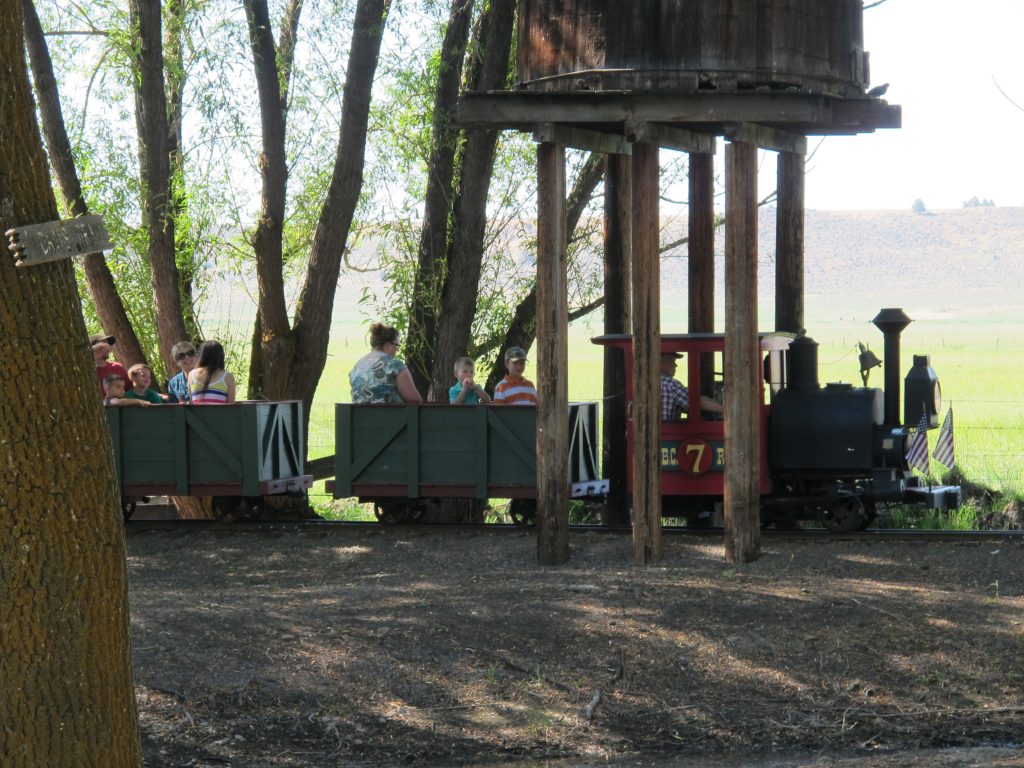NCO WATER TANK
There is an interesting story behind this water tank which Stephen installed over the railroad tracks in the Railway Gardens. According to Wikipedia, “The Nevada-California-Oregon Railroad was a 3 foot narrow gauge railroad originally planned to connect Reno, Nevada, to the Columbia River. However, only 238 miles of track were laid, so service never extended beyond Lakeview, Oregon. In April 1902, the line reached Madeline, CA, and the route to Lakeview was completed in 1912. Due to financial difficulties, in 1925 the NCO Railroad was sold to Southern Pacific and the roadbed was converted to standard gauge.”
This water tank was installed in 1912, when the NCO Railroad reached Madeline, CA. Following World War II, when steam engines were replaced by diesel engines, the Madeline water tank was sold and moved to a ranch about five miles from Madeline and converted to a granary. Granaries were built on ranches to hold the large quantity of grain needed to feed the work horses.
In early 2004, Stephen attended a ranch sale in Madeline and discovered the water tank. The water tank was not expensive to buy at the auction, because everyone thought it couldn’t be moved in one piece. The photographs below show the NCO water tank as it was found on the original ranch, and the process of moving and installing the tank over the railroad tracks of the 18” narrow gauge railroad in the Railway Gardens.


The NCO water tank as it was found at the ranch auction in Madeline. The roof that had been added to the water tank when it was a granary is still present in these photos at the auction site.
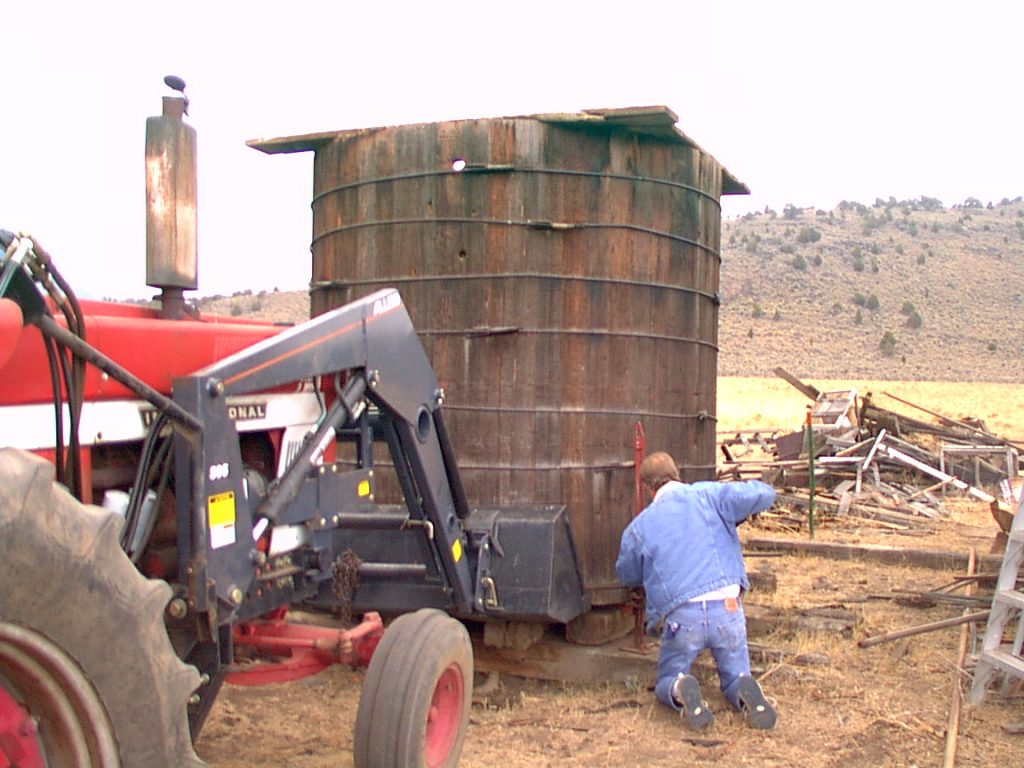

After Stephen removed the roof, the water tank was carefully lifted and placed on a trailer. Because it is made of redwood, the large water tank is not as heavy as it looks.

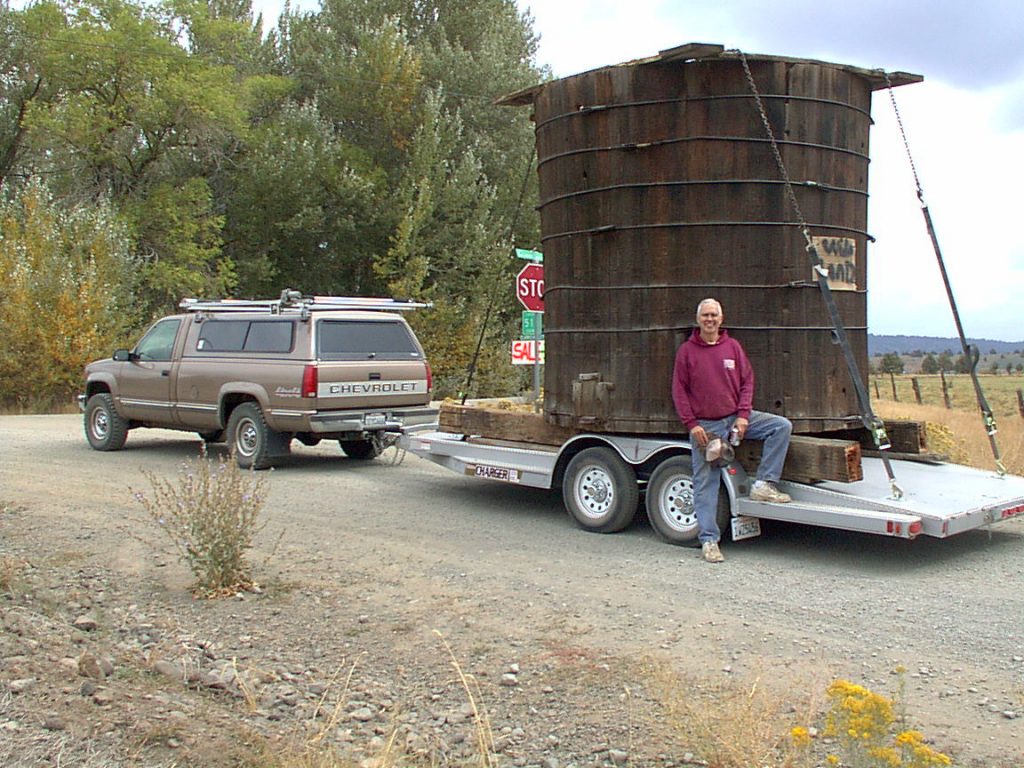
In the photos above, the water tank is loaded and ready for the trip to Alturas.
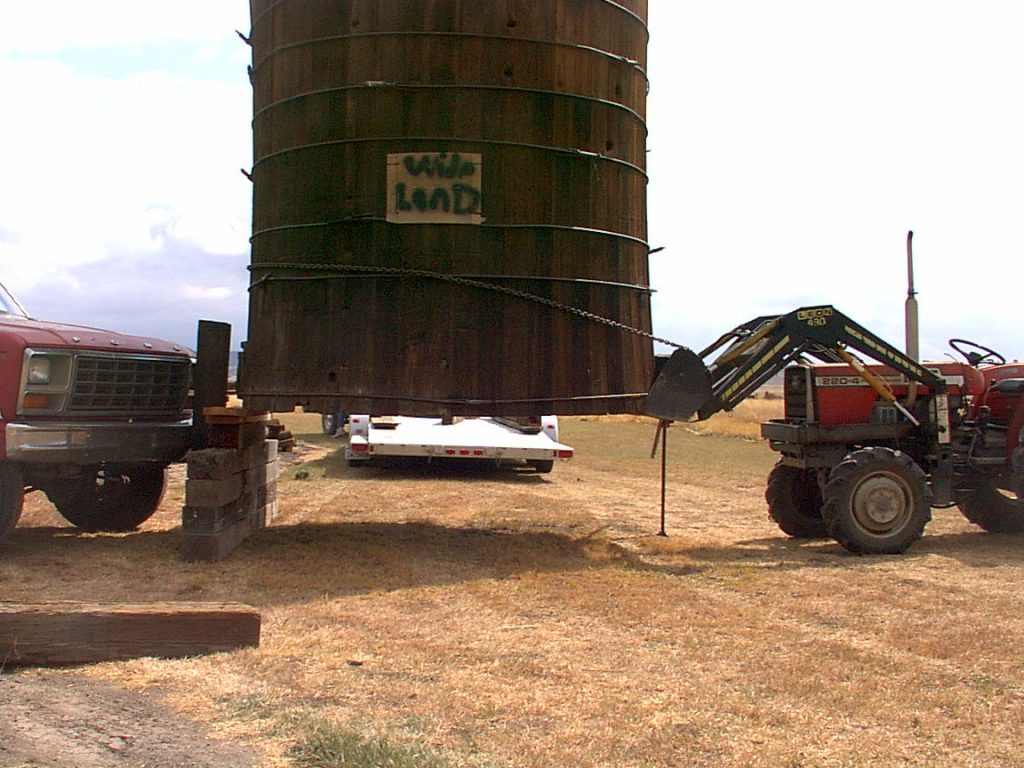

The photos above show Stephen unloading the tank on his property in Alturas and placing it on railroad ties so it will be easier to lift when it is moved to its final location.


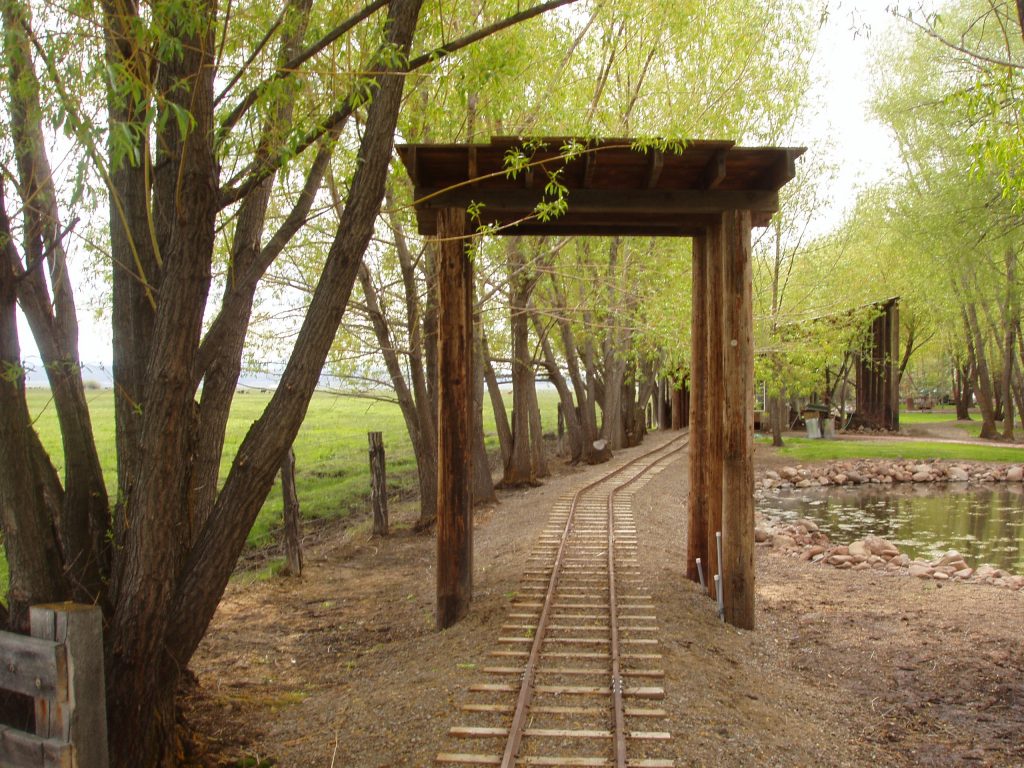
In the next step in the project, Stephen built a platform over the area where the railroad tracks will be installed. Eventually the train will run under the water tower.
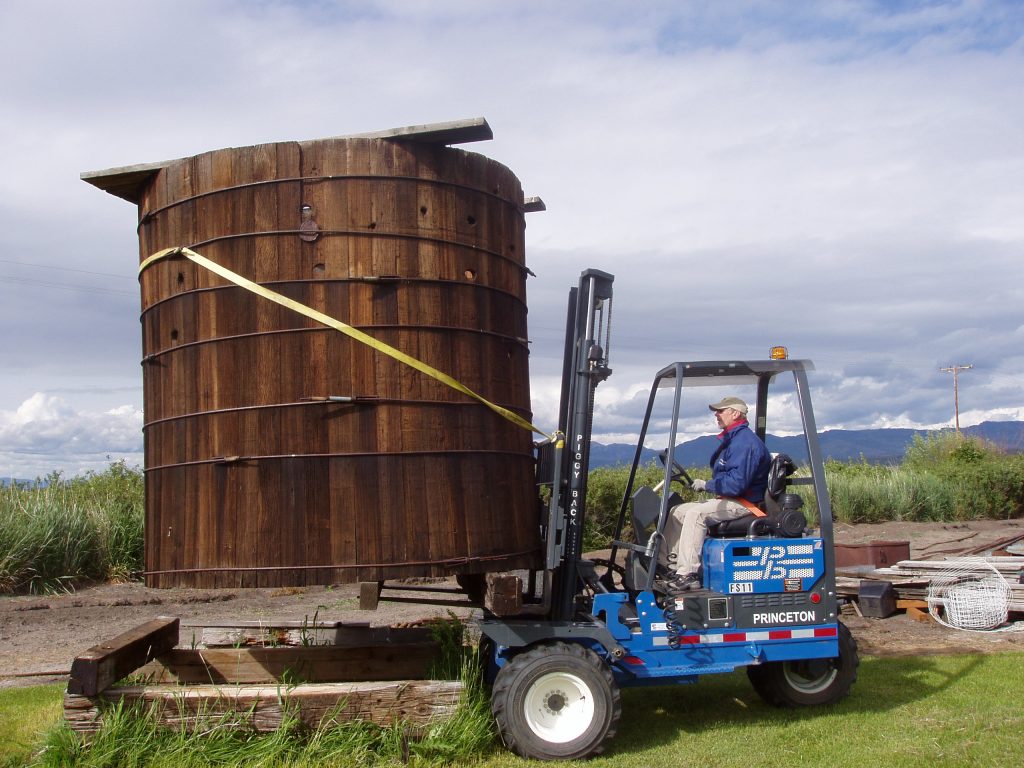
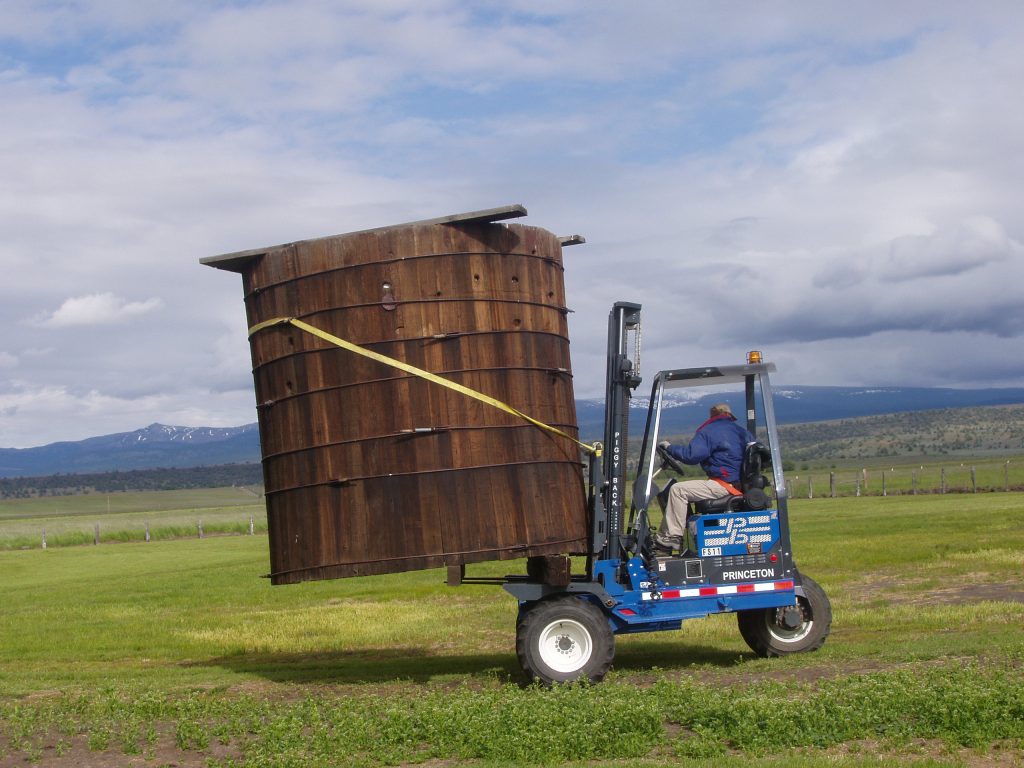
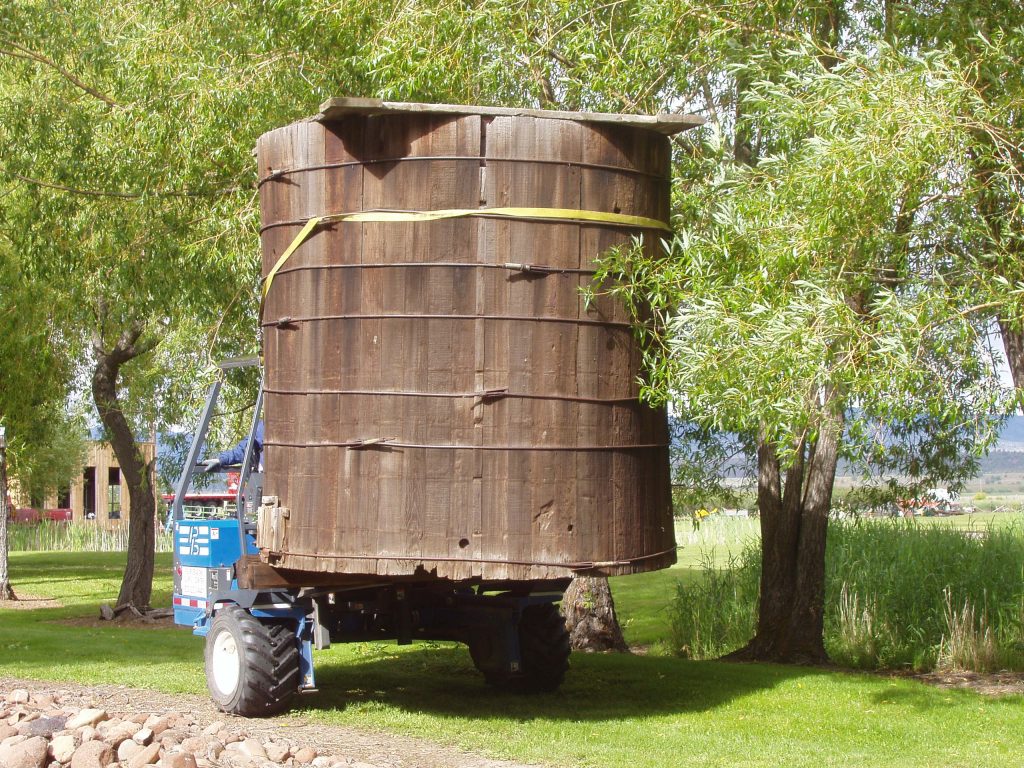
Gary Spicer, the owner of Four Seasons Supply Center in Alturas, volunteered to use his fork lift to help Stephen move and install the water tank on the newly constructed tower.
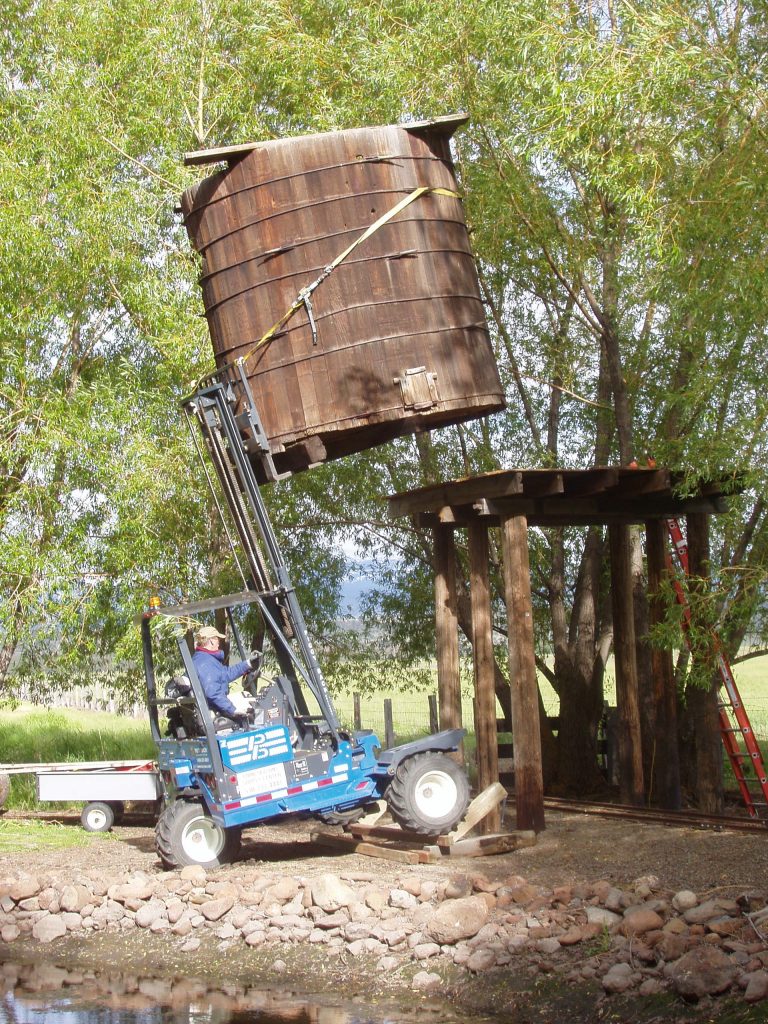
Lifting the tank on the tower was the most difficult part of the project. The small door near the bottom edge of the water tank was used on the ranch to remove grain when the tank was used as a granary.

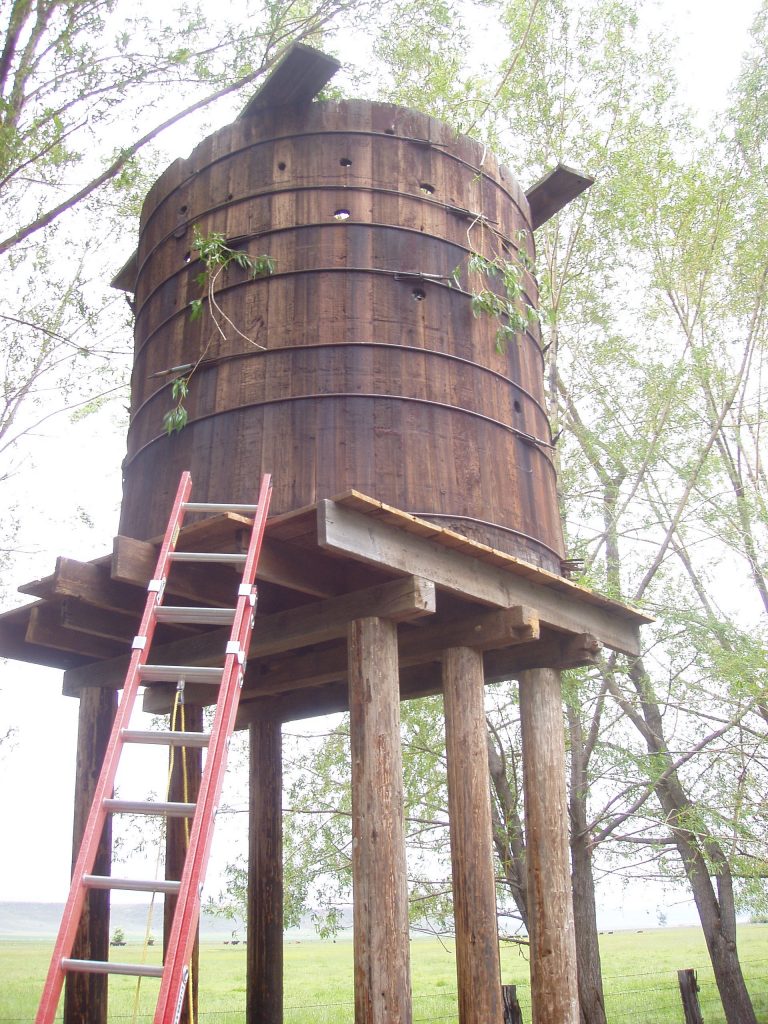
The holes shown in the side of the water tank were pecked by birds on the ranch to get at the grain when it was used as a granary.

PROJECT COMPLETED!
